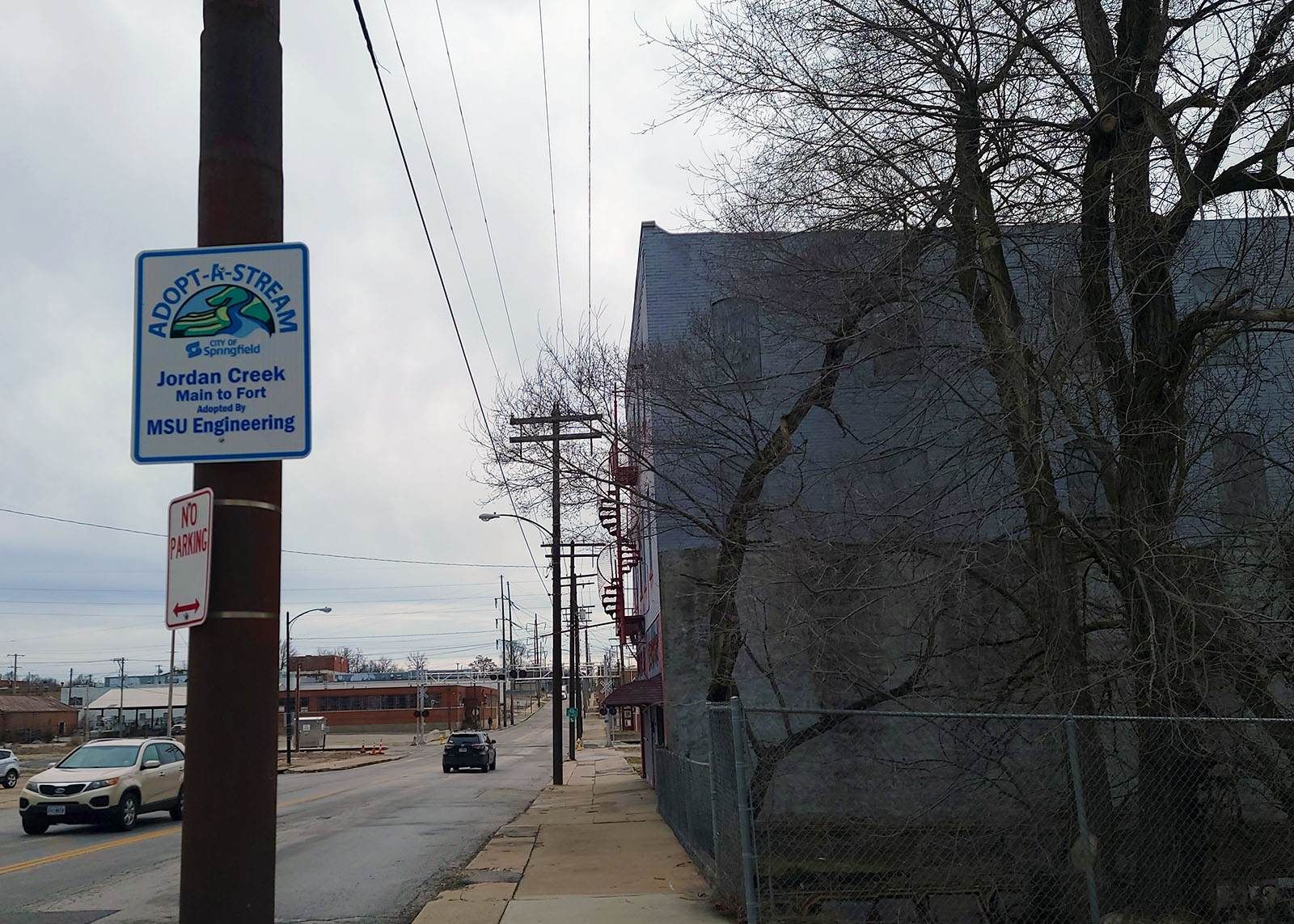More than 60 haunted house lovers walked out of Springfield Historic City Hall disappointed Tuesday night as an eminent domain case moves ahead.
The Springfield City Council voted 9-0 on Feb. 21 to authorize the use of eminent domain procedures to acquire the Hotel of Terror on Main Avenue. The 107-year-old building is surrounded by public property and is reportedly needed for the construction of a new bridge and the revitalization of Jordan Creek as a downtown gathering place.
A standing room only crowd filled the gallery in the city council chambers, many wearing Hotel of Terror T-shirts in an effort to discourage the future teardown of the haunted house attraction.
Negotiations between Hotel of Terror owner Sterling Mathis and representatives of the City of Springfield will continue. If eminent domain proceeds to completion, Mathis would receive what a third party arbitrator deems to be “fair value consideration” for the building, plus a second payment for relocation.
Councilman Andrew Lear gave an explanation of the eminent domain bill before the council vote. Lear said the bill is an authorization, but does not necessarily mean property will be seized. The City of Springfield will have to pay Mathis for the building, the question is how much money and how agreeable the two parties are when payment is made.
“This is not a taking,” Lear said. “(Mathis) would be able to receive fair value. The contract and the negotiations continue.”

Lear said he hopes negotiations will continue and succeed without mediation. City Manager Jason Gage further explained the eminent domain law.
“There have been attempts for some time now to negotiate price,” Gage said. “The intent of the eminent domain law is to determine, if there is a disagreement on price, what the actual fair market value is of the property.”
The city of Springfield owns all of the surrounding land on the east side of Main Street, except for the Hotel of Terror, which was built in 1915 and first operated as an actual hotel. Greene County Assessor’s Office records show the building is 8,938 square feet.
The Hotel of Terror has operated as a seasonal attraction on Main Street since 1978. Over time, Mathis has built in elements for the haunted house that he says are one-of-a-kind and irreplaceable.
City Council documentation shows the Main Avenue bridge has been deemed structurally deficient, and vehicles weighing more than 10 tons are not allowed to cross the bridge. Chris Dunaway, principal engineer for the Springfield Department of Public Works, said the weight limit stops City Utilities buses from using the bridge, even though it is close to the downtown bus transfer station off West Olive Street between Grant Avenue and Main Avenue.
Mathis owns a second seasonal haunted house. Dungeons of Doom is located at North Grant Avenue and West Wall Street.
Eminent domain in Springfield’s charter

Legal procedures for the City of Springfield to take property by the use of eminent domain laws are spelled out in two key areas of the city charter.
Article 2 of the Springfield City Charter spells out the City Council’s powers and authorities. It includes a clause to make public improvements and “acquire, by condemnation or otherwise, property.”
Article 29 of the Springfield City Charter, the “miscellaneous provisions” chapter, authorizes property to be condemned for the purposes of eminent domain acquisition.
“All proceedings for the condemnation of property or in the exercise of the right of eminent domain shall be in accordance with the laws of the state now or hereafter applicable to cities of the second class, or with such laws as may be provided for constitutional charter cities,” the provision in the charter reads.
Article 2 also specifies the power of eminent domain, that the City Council may, “condemn private property, real or personal, or any use therein for public use within or without the city.”
The new Main Avenue bridge is to be paid for through a combination of sources, including Springfield’s level property tax, its ¼-cent capital improvement sales tax, its ⅛-cent transportation sales tax, and any green infrastructure or transportation grants the Department of Public Works can secure.
The city of Springfield and Mathis could continue to negotiate. Mathis could also challenge the City Council’s eminent domain vote in court by bringing a lawsuit against the city.

